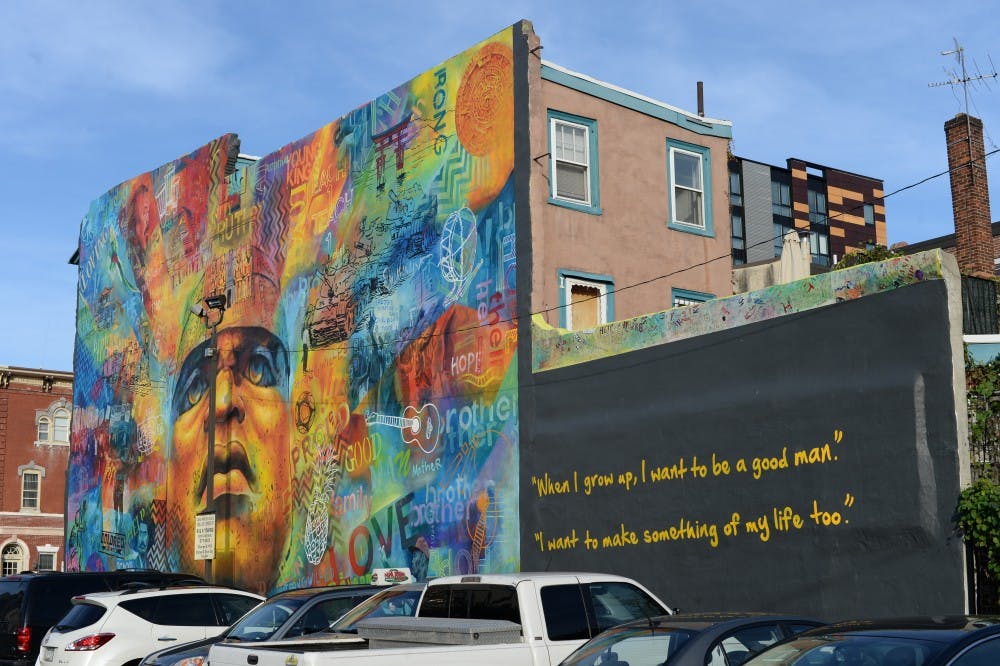As privileged Penn students, it can be easy to forget that the small corner of West Philadelphia that we call home is not representative of the rest of the neighborhood. Wander a bit farther west, and you'll run across many houses that are run down or otherwise neglected— an undeniably less pristine environment than what you would find near Rittenhouse. But, if you pay enough attention, you’ll notice that there is one commonality between most Philly neighborhoods, regardless of demographics: mural art.
Jane Golden, founder of the City of Philadelphia Mural Arts Program (Mural Arts), has dedicated the past 32 years to changing the lives—and walls— of Philadelphia residents. Since its establishment in 1984, the Mural Arts program has overseen the creation of nearly 4,000 murals. The establishment has committed itself to turning around the lives of Philadelphians. An employer of convicts, community members and skilled workers—people from all walks of life—Mural Arts is responsible for bringing one of the largest art movements in the country alive.
Golden found a piece of the solution to poverty in a place where few others thought to look. In collaboration with the Philadelphia Anti Graffiti Network, Golden worked alongside numerous graffiti artists to redirect their talents into city–supported projects of massive caliber. The first murals created by Golden and her team attracted so much attention that the project was rapidly expanded and shifted over to the Philadelphia Department of Recreation.
Vandalism was soon turned into massive artistic statements that continue to bring meaning and change to communities in need. Today, the program returns millions of dollars into the Philly economy by providing salaries to those that contribute to the murals, including many people who would otherwise be unemployed.
In addition to repurposing the talents of graffiti artists, Golden created a way for prisoners to reintegrate into society. The restorative justice programs at Mural Arts train inmates by involving them in the process of mural development, which can take over a year. The training that Mural Arts gives inmates provides them with the necessary job skills they need to succeed after prison. Given the opportunity to work next to world class artists on intensive projects, Mural Arts’ mission is to make sure that those who need support the most don’t get left behind.
By providing prisoners and youth at risk with purpose and useful skills, Golden aspires to provide “reminders of how far they have come, highlighting a hopeful path forward.” The designs of the murals are inspired by movers and shakers of the community, tragic events, love or whatever is found to be important to the inhabitants of the area in which a mural is painted.
Mural Arts is also involved in mental health initiatives through their Porch Light Program. Psychiatric disabilities have long been overlooked by American society, despite the prevalence of issues like addiction, depression and PTSD. Golden has given people suffering from mental illness a voice. More importantly, she’s incorporated them into a community, enforcing the idea that nobody should suffer alone.
Chances are you probably haven’t thought too much about the murals you see when walking around campus. Maybe you just haven’t noticed one yet. But next time you do notice one, stop for a moment and recognize that the pretty painting isn't just art. The murals represent change in a population that many have lost hope in just that. The murals represent that, whatever you might be facing, you are not alone.

